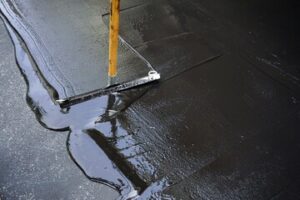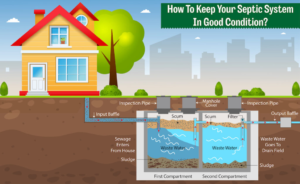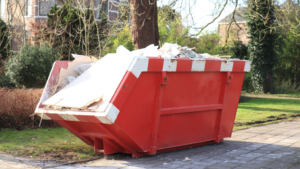Your chimney & venting system plays an important role in the safety of your home. It protects your family from fire and harmful vapors.
Chimney inspections help catch problems that can be dangerous or costly. A level 2 chimney inspection often requires a video scan and may include examining the attic, crawl space or basement. Contact Chimney Inspection Baltimore now!

This level of inspection typically takes about 45 – 60 minutes to complete. It involves a review of driver’s license, Medical Examiner’s Certificate and skill performance evaluation certificates; records showing status as to personal conveyance, adverse driving conditions or short haul exemptions; ELD or log book; vehicle registration(s); seat belt; and HM/DG requirements. It is important to be near your truck or cab throughout the entire process so that you can assist the inspector as needed. Usually, you’ll be asked to turn your headlamps on and off and to demonstrate how the air brakes and electrical systems work. You may also be asked to provide any documentation the inspector requests. A well-prepared driver will have no problem passing this level of inspection.
This is the most frequently performed inspection, and it’s the most cost effective as well.
Level 2 Inspection
When it comes to chimney maintenance, many homeowners think that having their fireplace regularly swept is enough. While it’s true that having your chimney swept is a crucial part of keeping your fireplace and chimney functioning well, a level 2 inspection is also necessary to evaluate the condition of your entire chimney system.
This type of inspection can identify the underlying causes of long-term issues, such as drafting problems and leaks. It can also detect masonry problems, such as cracks or crumbling, that may be affecting the structural integrity of your chimney.
A level 2 inspection is also a good choice for homeowners who have made changes to their fireplace, such as adding a new fuel source. The inspection can help determine whether these changes will affect the chimney’s drafting or safety, and allow you to make adjustments to improve your fireplace’s performance.
The level of inspection you choose for your home should depend on several factors, including how often the chimney is used, the age of the house, and any recent changes to your fireplace or stove. The level of inspection you need should also take into account any environmental hazards, such as radon, lead paint, or mold, that may be present in the home.
For homeowners who are considering selling their property, a level two chimney inspection is also highly recommended. This inspection can give potential buyers peace of mind that the chimney is safe and in good condition, which can help speed up the sales process.
Using an online scheduler to manage client appointments can be beneficial for both clients and inspectors. Not only does it streamline the scheduling process, but it can also provide essential data about each client, such as their preferred times and dates for inspections. This information can then be used to create personalized service for each client, which can increase customer satisfaction and retention rates. In addition, online schedulers typically come with automated confirmation and reminder emails, which can further reduce missed appointments and promote a professional image for your business.
Level 3 Inspection
When performed every 2-3 years, this comprehensive evaluation of a home’s exterior and interior components prevents costly repairs and maintains safety standards. This level of inspection includes tests for environmental hazards such as asbestos, radon and lead paint. Inspectors should provide clients with an inspection agreement that clearly outlines what is and isn’t included in the assessment.
Online schedulers make it easier to gather essential client information and offer a more personalized experience. Additionally, they help reduce the likelihood of missed appointments and miscommunications by providing automated confirmation and reminder emails. Implementing an online scheduling tool also showcases your business’ commitment to modern technology and can be a selling point for tech-savvy clients. Ultimately, it’s important to schedule your inspection as soon as possible.
Schedule Your Inspection
Chimney & fireplace inspections are an important part of your home maintenance routine. You should have them done semi-regularly to make sure your chimney is in good working condition and that it hasn’t been damaged by fire, water, or animals. This is particularly important when you use your fireplace frequently, such as on chilly winter nights.
A professional chimney sweep can spot issues that you might not notice, like creosote buildup and other obstructions in the flue. They can also check for cracks and other damage to the masonry. Having these problems fixed early can prevent them from becoming worse and more expensive in the long run.
Your chimney system has more than just a fire inside it; it’s also the way that toxic gases like carbon monoxide escape your house. If the chimney becomes blocked, carbon monoxide will back up through the fireplace and into your home. This poisonous gas is odorless, tasteless, and colorless, making it hard to detect without a carbon monoxide detector. If you don’t have a detector, you need to have your chimney professionally inspected at least once each year so that it can be cleared of any carbon monoxide buildup.
Chimney inspectors can spot a variety of issues during a Level 1 inspection. They can also recommend repairs to fix any of the problems they discover. They might also have to go into your crawl space, attic or other area in order to get a better look at certain parts of the chimney that aren’t easily accessible.
If your chimney has been through a major event, like a chimney fire or a dramatic weather incident, a level 2 inspection might be necessary. During this inspection, your chimney professional will use video equipment to take a closer look at the entire interior of the chimney and to identify potential damage that may not be visible from outside.
While many people think of a chimney inspection as a “nice to have” service, it’s actually essential to keeping your family safe and your fireplace functioning properly. Schedule a chimney inspection today to avoid more costly repairs in the future.
Loose Bricks
Bricks that are loose or moving out of place may be caused by a loss of mortar or a failure of the brick material itself. Loose bricks that aren’t repaired can cause structural issues and safety hazards. If you notice any bricks seeming to move out of place, tap them to see if they sound hollow or have a spongy feel. If they do, it’s time to call a professional for repairs.
One of the best ways to avoid loose bricks is to routinely self-inspect your brick walls, chimney, or steps. This will help you catch problems before they grow out of control. Look for signs of water damage, such as spalling, fading or discoloration, mold and mildew, and freeze-thaw damage. If you do spot problems, address them promptly to prevent more serious and expensive repairs.
Another way to prevent loose bricks is to apply a breathable sealant to brick surfaces. This will help reduce water absorption, ice damage, and mold and mildew growth. It can also help with brick fading and color loss. To apply a sealant, first clean the surface with a wire brush and a low-pressure power washer. After that, use a trowel to apply a coat of the sealant. Wait for it to dry before using the brick surface again.
In business, the “loose brick strategy” refers to a company’s pursuit of opportunities that competitors might miss. This type of strategy requires agility and a continuous search for competitive advantages in a dynamic market. It’s similar to the concept of “encircling the flea,” as outlined by the business strategy book by Michael Porter.
The first step to repairing a loose brick is to mix up some mortar. You can buy a 10-pound bag of Quikrete Mortar Mix at your local hardware store. Follow the instructions on the package to mix it. It should be the consistency of thick cake batter. Make sure you wear impervious nitrile gloves while mixing.








